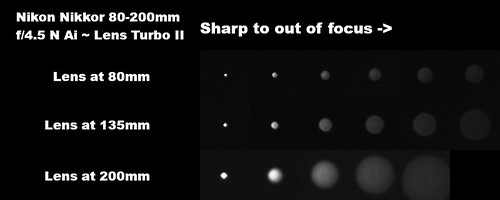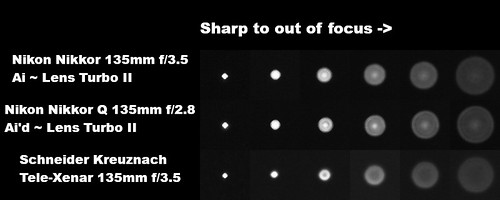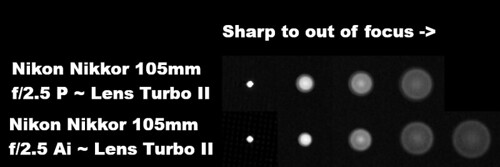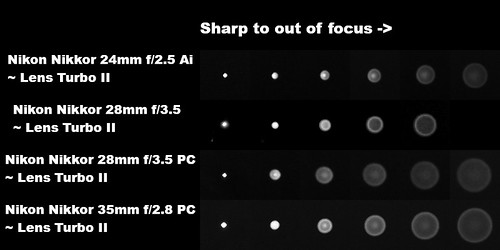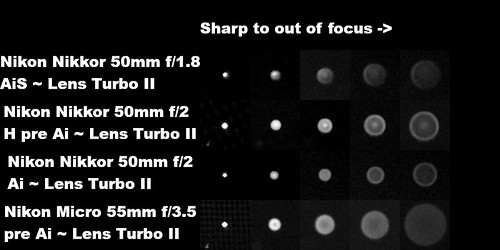What I wanted to see was what effect, if any, a soft filter might have on out of focus rendition comparing a neutrally corrected for spherical aberration against an under-corrected lens.
Setup -
- Sony NEX5T, ISO 100, 2 second timer, -1 EV
- Big Beefy Manfrotto tripod
- Lenses using with a Lens Turbo II focal reducer -
- Nikon Micro-Nikkor 55mm f/2.8 Ai (neutrally corrected spherical aberration)
- Nikon Nikkor 85 f/1.8 K pre-Ai (under-corrected spherical aberration)
- NOTE1: Lenses were shot at the widest aperture only
- RawTherapee to convert RAW files into black and white and to set the black levels
If you click on the following images you can inspect them at 100 percent.

Nikon Micro-Nikkor 55mm f/2.8 Ai - no filter

Nikon Micro-Nikkor 55mm f/2.8 Ai - #1 Soft filter

Nikon Micro-Nikkor 55mm f/2.8 Ai - #2 Soft filter

Nikon Nikkor 85mm f/1.8 K ~ no filter

Nikon Nikkor 85mm f/1.8 K ~ #1 Soft filter

Nikon Nikkor 85mm f/1.8 K ~ #2 Soft filter
Comments -
Differences between the neutrally and under-corrected spherical aberration out of focus renditions can be subtle. Look at the out of focus stems and the shadows on the left side of the pears. If you study the images carefully, you will begin to see the real world effects of out of focus rendition optical corrections.
When using Nikkor Soft filters, you can see how mid-tone contrast is lowered as well as reducing resolution. Looking carefully, again, you can begin to see how the light/dark transitions are different between the two lenses.
Here is one final example. It was made using a Nikon Nikkor 50mm f/1.8 AiS which is under-corrected for spherical aberration in the out of focus areas behind the point of focus. I added a Nikkor #1 Soft filter and shot the lens wide open to get the maximum out of focus rendition effect.
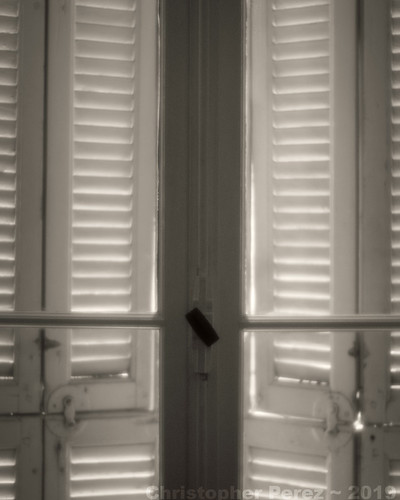
Resources -
For further information on how the topic of out of focus rendition, optical properties, and Nikon lens design history, please refer to the following -
A PhD thesis on the impact of "soft focus" lenses on the history of photography - http://research-repository.st-andrews.ac.uk/handle/10023/505
An excellent starting point for understanding out of focus rendition (I might not completely agree with his interpretations/observations, but his foundation of understanding is quite good) - http://jtra.cz/stuff/essays/bokeh/
Nikon lens design histories - https://imaging.nikon.com/history/story/
Point light source discussions - https://www.dpreview.com/forums/thread/4031515
Zeiss comments on optical design - https://lenspire.zeiss.com/photo/en/article/how-does-zeiss-define-bokeh-an-interview-with-dr-stefan-ballmann
Metabones Focal Reducer whitepaper - https://www.metabones.com/assets/a/stories/Speed%20Booster%20White%20Paper.pdf

